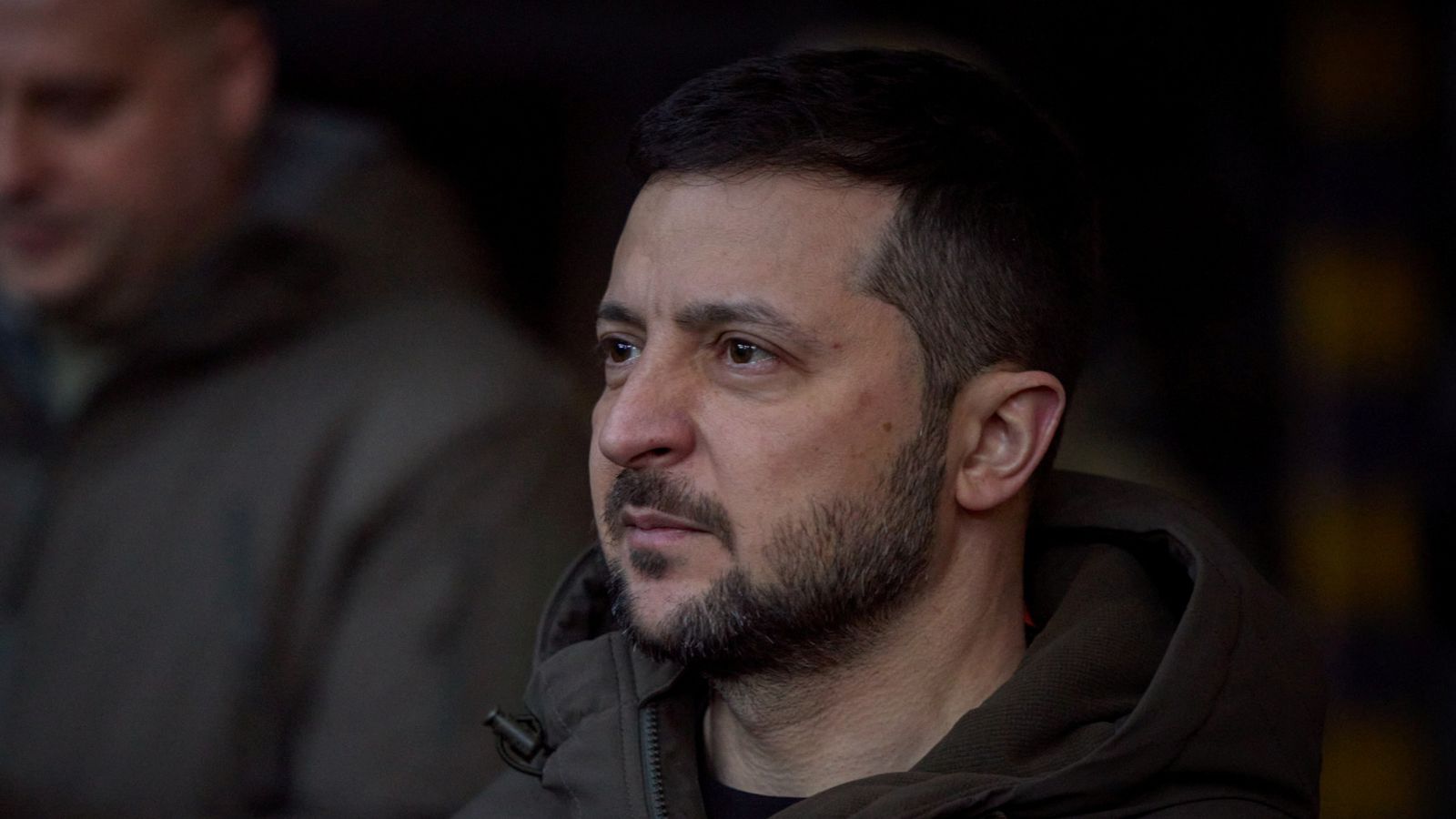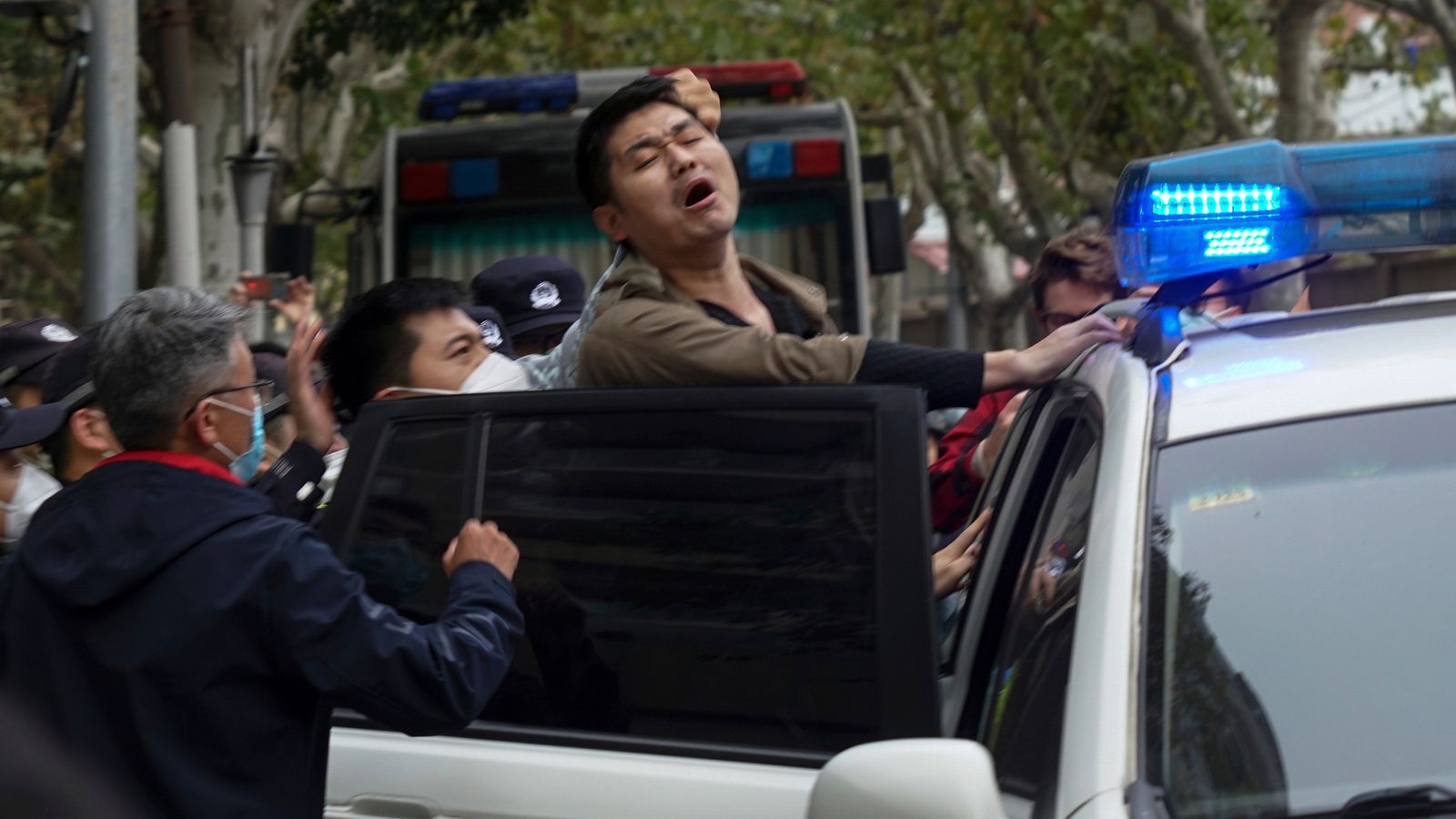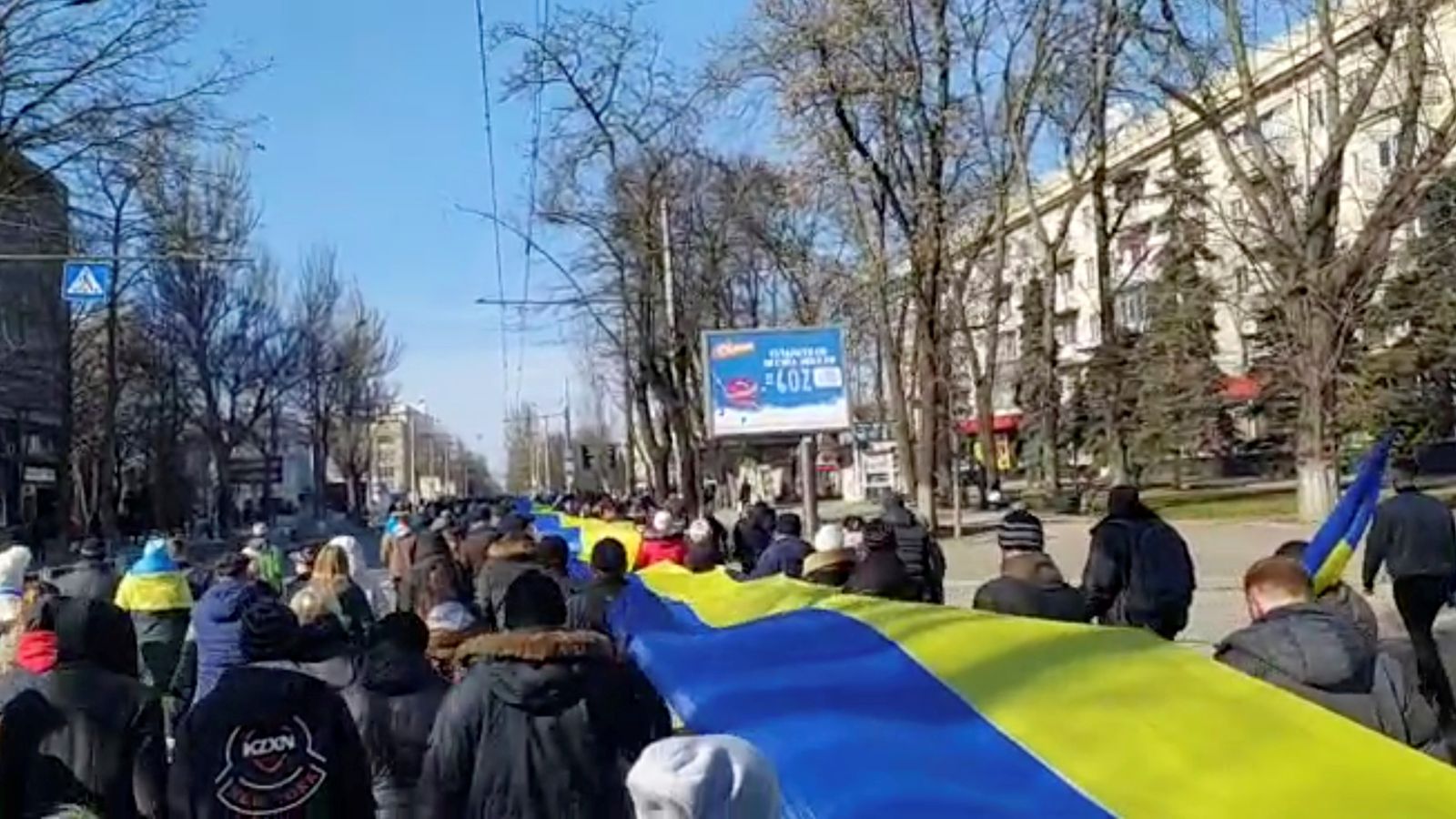At the Maslovka railway station just south of the Russian city of Voronezh, there’s a small military camp, a few trucks and a tent.
The clearing in front is rutted thanks to the steady unloading of military equipment in recent weeks.
A soldier recognises us from the day before.
“Hello spies,” he said.
Russia’s military build-up in Crimea and along the border with Ukraine has hardly been subtle.
It has coincided with the breakdown of the latest ceasefire in the simmering conflict between Ukraine and Russian-backed separatists in eastern Ukraine.
More and more videos have appeared on social media of Russian troop movements – artillery convoys along the bridge connecting Russia with Crimea; trains loaded with weaponry coming from as far east as Siberia.
These sightings from ordinary Russians alongside warnings from Ukrainian generals preceded the Russian military’s announcement of exercises in the region and sent alarm bells ringing across Western capitals.
The kit unloaded at Maslovka is headed to a nearby training ground, which has been turned into a huge military field camp.
It stretches for around a mile and a half and backs right onto a neighbourhood of dachas, the weekend homes of mostly Voronezh city-folk who tell us the build-up began in late March.
We accidentally drive right in, though the soldiers make no effort to come after us.
There are a large number of military trucks, row after row of tents, troops milling about.
The sign at the entrance is one that most Russian conscripts remember from military service – “Difficult on exercise, easier in the fight”.
The site was first identified through open source methods by the Conflict Intelligence Team (CIT) in Moscow.
“It looks more like preparing for an offensive operation, not just to protect our land,” CIT’s Ruslan Leviev told us in Moscow.
But he does not believe it’s a prelude to war.
“It looks like a show of force to put pressure on the Ukrainian government, to show your posture on the international stage, to show your position to the new American administration.”
Locals pottering around their dachas hardly spare a thought for the military build-up next door.
“If Zelensky (the Ukrainian president) isn’t a fool, then nothing will happen. If he is a fool, anything could happen,” said Nina, a pensioner who we meet watering her garden.
“‘Anyway, it’s not him who decides things, it’s the Americans.”
She does not want to give her surname.
“I hope I haven’t revealed any military secrets,” she added.
“There are always exercises here, every summer,” said Yuri, a local guard.
“Stop all this talk of war.”
But there are not exercises on this scale.
Neither here nor elsewhere along Russia’s border with Ukraine.
Not since the annexation of Crimea has Russia beefed up its presence there to this extent, re-deploying an air brigade from near the Estonian border and sending 10 naval vessels from the Caspian to reinforce the Black Sea fleet.
In response, the US has announced it will send two warships into the Black Sea.
The German chancellor asked Vladimir Putin this week to wind down the military build-up.
This Sunday after consultations with his US counterpart, Britain’s Foreign Secretary Dominic Raab tweeted the same.
It does not appear to be happening.
The Russian position is clear. What happens on Russian soil is Russia’s business.
It is hard to argue with that.
But ostentatious muscle-flexing around Ukraine is not an option for the West to ignore – the stakes are too high, they are for all involved.
Ukraine’s leader Volodymyr Zelensky may clamour for fast-track NATO membership but he will not get it.
For all their loud protestations over NATO’s possible eastward-creep, the Kremlin knows that.
US President Joe Biden may declare his unwavering support for Ukraine’s territorial sovereignty and integrity but he will be wary of walking anywhere near potential conflict with Russia.
And surrounded as he is by Russian forces, president Zelensky knows re-taking the country’s eastern Donbas region, parts of which are held by separatists, is wishful thinking as is any large-scale fight with his powerful neighbour to the East.
It is of course hard to know what Russia is playing at but they seem to be eyeing the long game.
Coercive diplomacy to extract concessions in negotiations on Donbas, a powerful display of military muscle for the new US administration to take note of while the de facto annexation of the separatist regions of Ukraine chugs along apace.
According to Russian state news agency Ria Novosti, 420,000 people in the Donetsk and Luhansk people’s republics have already received Russian passports.
Russia is aiming for one million by parliamentary elections this September.
“It’s unifying their legislation with the Russian one, it’s providing them with the Russian vaccine, it’s providing them with passports. It doesn’t mean Russia wants to annex them,” said Maxim Samorukov from the Moscow Carnegie Institute.
“At least in the near future,” he added.
It also provides quite the justification for full-scale intervention should Russia’s calculus change.
President Putin has said allowing Ukrainian troops along Russia’s border with the separatist regions could lead to a Srebrenica-type massacre – the 1995 genocide of more than 8,000 Bosnian Muslims by Bosnian Serb forces.
Dmitry Kozak, Russia’s representative in negotiations on Ukraine, has threatened that a Ukrainian assault on Donbas would be a ‘”self-inflicted gunshot wound in the foot and to the head”.
“If the Srebrenica massacre takes place there, we will have to stand up for their defence,” he said.
Sharp rhetoric to match an aggressive display of military might.
All in the interests of deterrence? Perhaps.
But also an indication that eight years of sanctions has hardly served to deter Russia from at the very least flexing its muscles, if not more.




